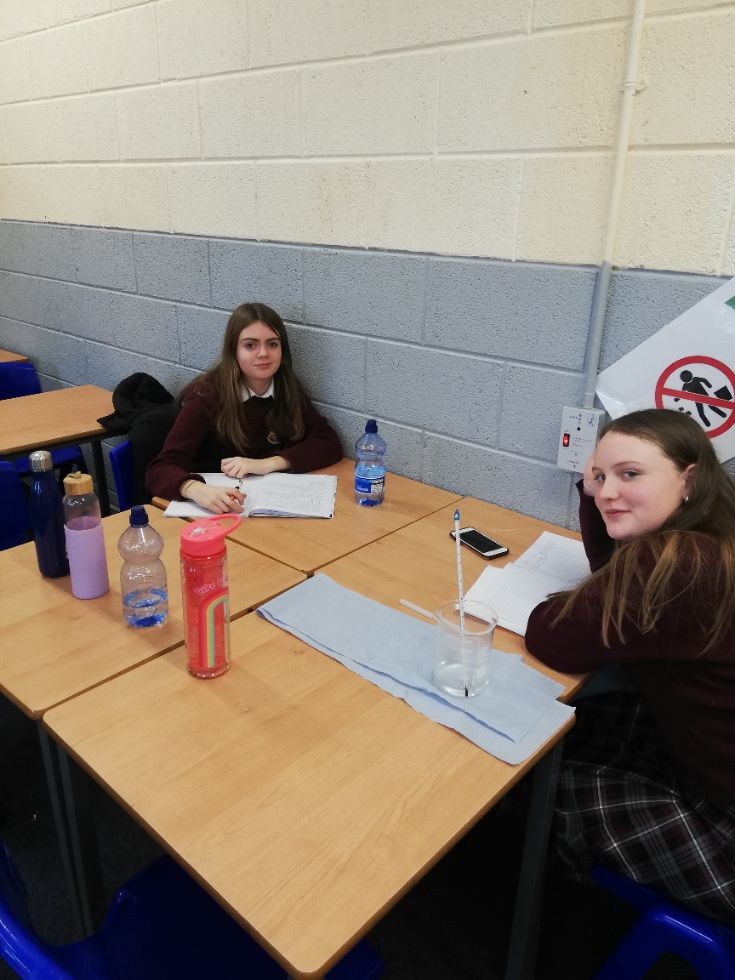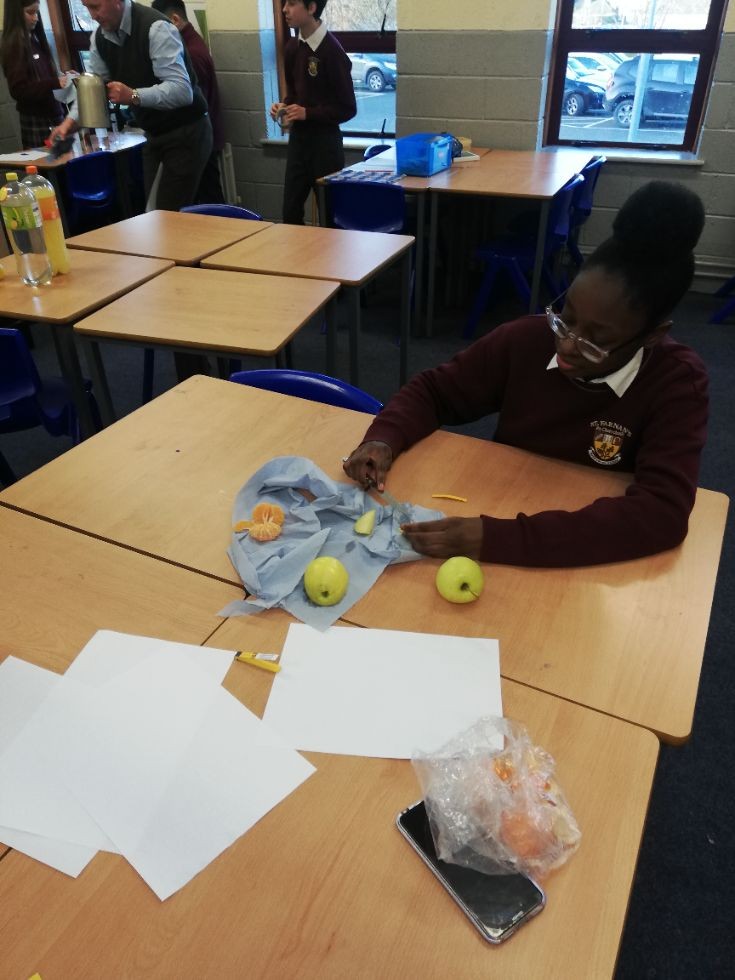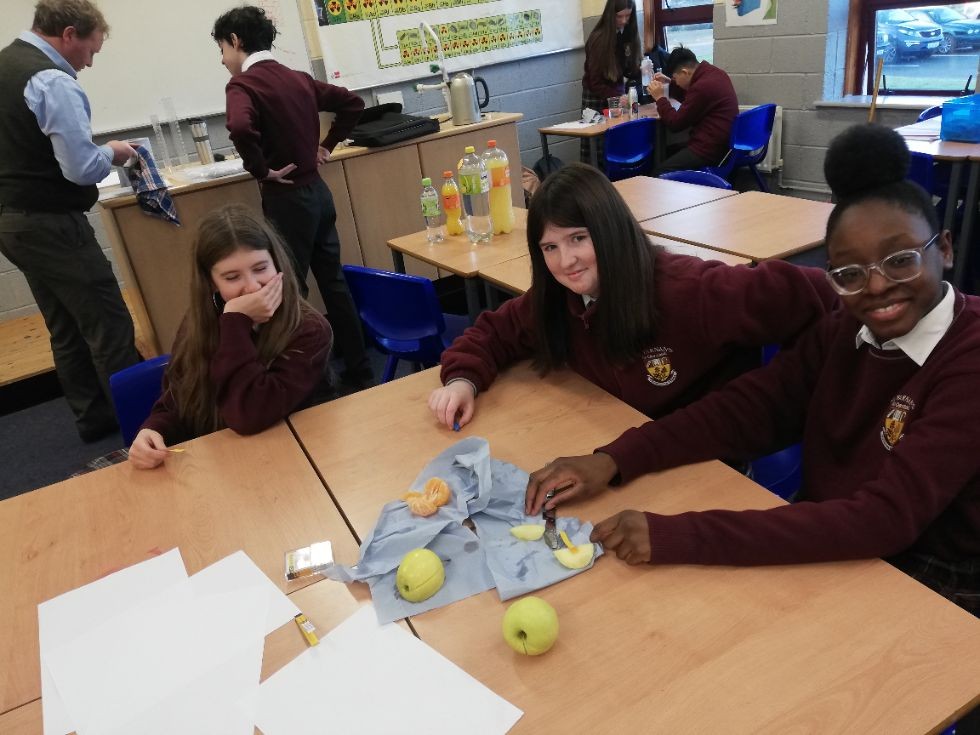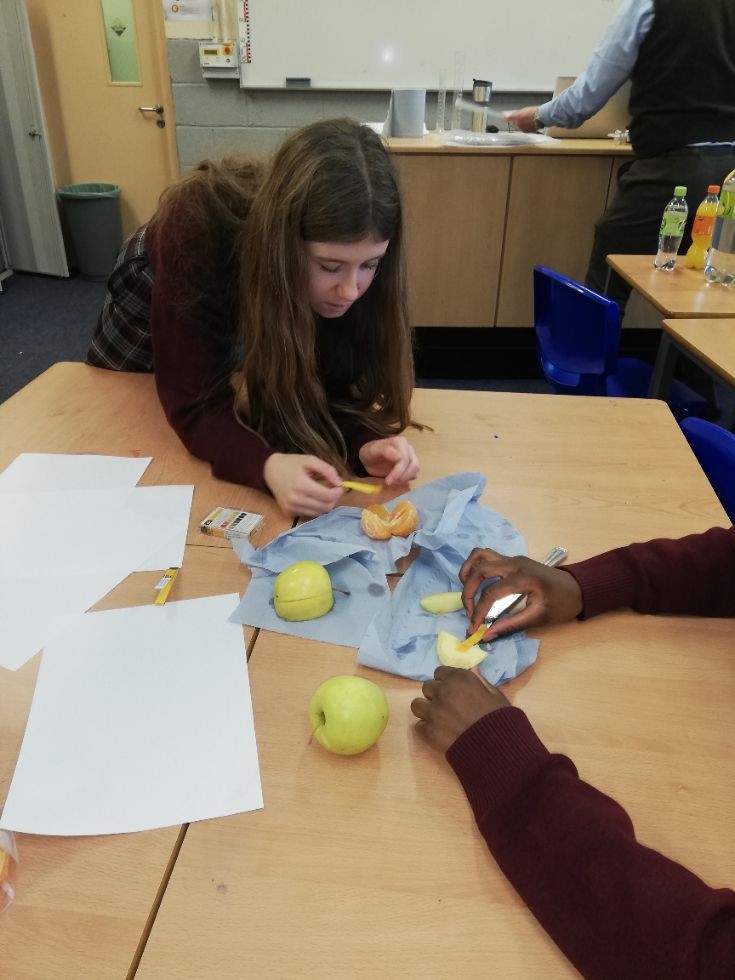Projects and CBAs in Action




Mr Thornton's Second Year Science Class conducted experiments for their Classroom Based Assessments and had lots of fun in the process!
Michal Orlowski describes his experiment to find out just how hard an egg shell is…
‘My experiment was to see how strong an egg shell was and if it was dropped onto different materials like paper, cloth or tape would the shell crack? I also wanted to find out which material was the best one to prevent it from breaking. The materials I used included a bucket, tape, paper, ruler, material and of course lots of eggs! I dropped a boiled egg from a 25cm height and discovered that tape was the only material that prevented the egg from breaking. I learned more about experiments and gained a lot of confidence in carrying them out on my own!'
Katie Butler and Leona Heffernans’ experiment focused on how to remove tan from bed sheets…
‘Our team tested three different detergents on tan stained sheets of material. We used different stain removers such as Lenor, Vanish stain remover and The Pinkstuff and St Moritz dark tan, sheets of cotton (bedsheet). We cut the cotton sheet into three small squares, we got three glass containers and put the same amount of detergent (product) into the glass containers. We then put the tan onto the sheet, and put the three squares into the glass containers. We had to wait half an hour to see which product removed the stains the best. The Pinkstuff removed the tan the best! Vanish came 2nd and Lenor came 3rd place. We had lots of fun and found the results quite useful!’.
Emily Brereton and Blessing David investigated if apples actually contained more citrus than oranges?..
‘The materials we used included an apple, an orange, knife and universal indicator paper. We squeezed the juice from both of the fruits and we then put the juice on the indicator paper. The colour on the indicator paper showed that the apple was more acidic than the orange!’ The whole experiment was very do-able. We were happy that we could carry out our own experiment in class'.
Amy O Reilly and Aoife Loughrey tested which type of bottle would keep water hot for the longest period of time…
‘The materials used were a plastic bottle, a steel bottle, a glass bottle, kettle, thermometer, beaker and water. We put 100ml of hot water and 100ml of cold water into each bottle, we recorded their temperatures every ten minutes for 40 minutes. We learned that it was the metal flask that kept the water hot for the longest. It was interesting to do an experiment together in class, we look forward to doing more with Mr Thornton!’
 Menu
Menu
